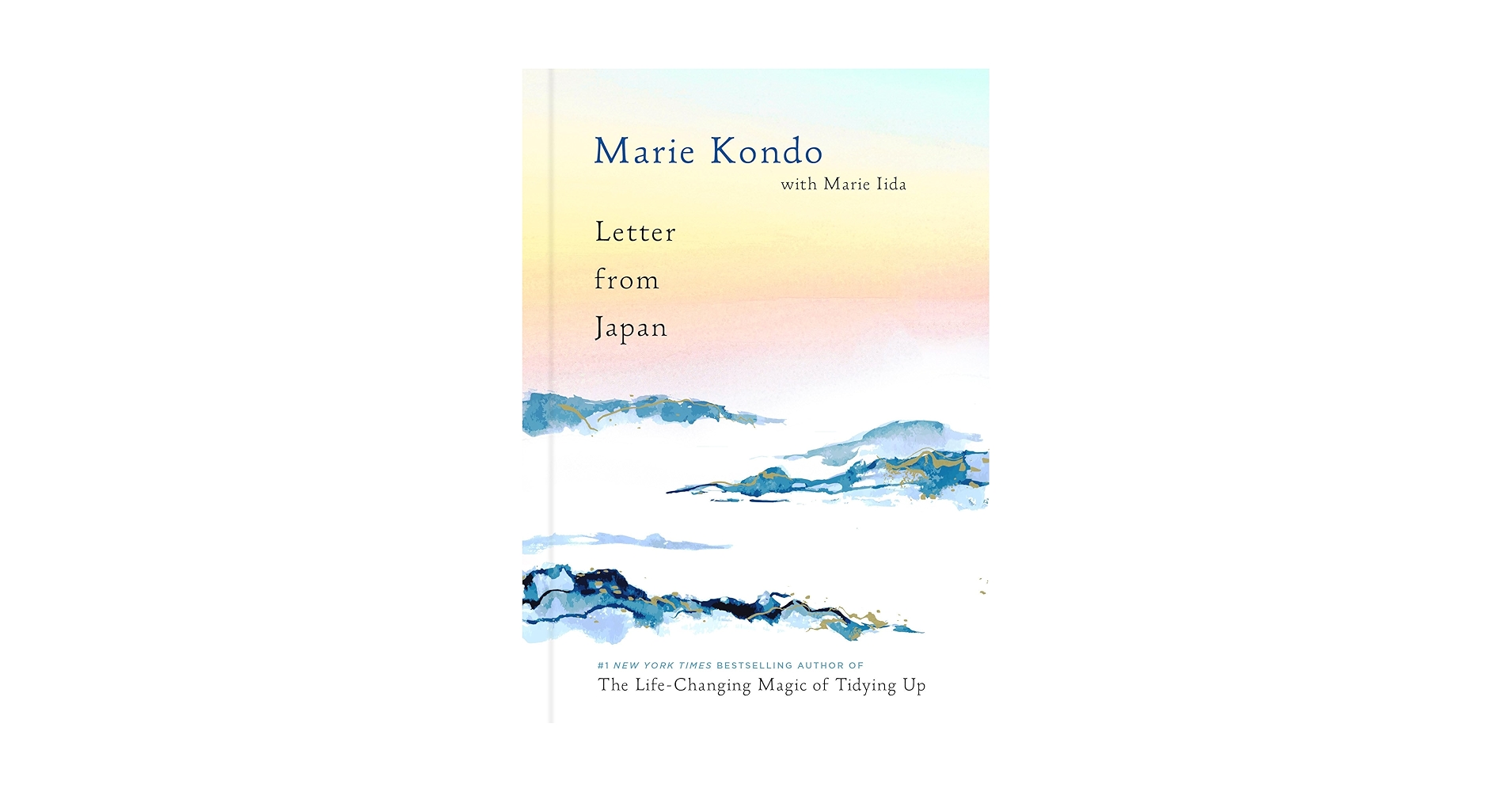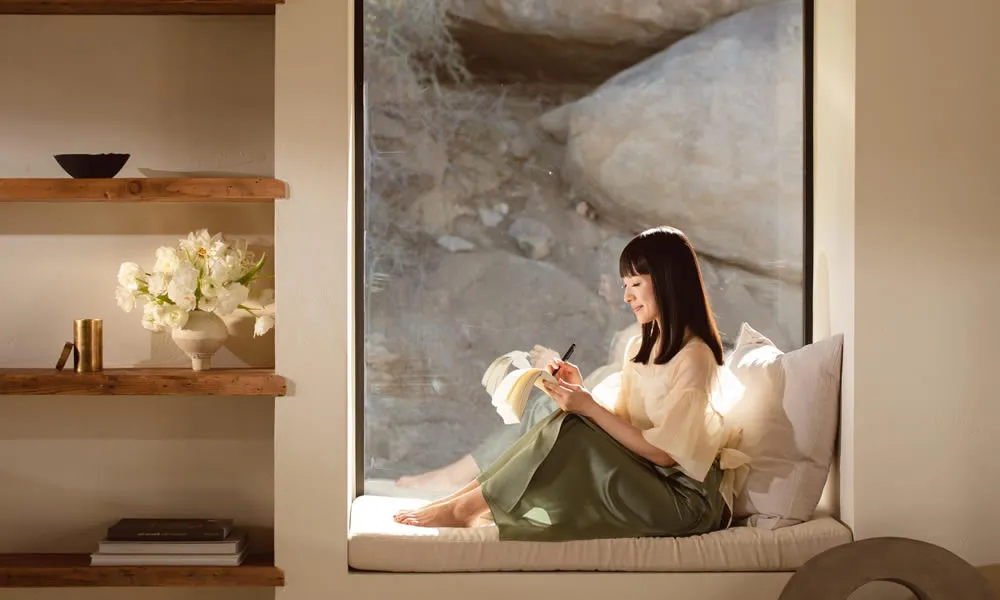Have you ever stood frozen in front of your closet, holding a lonely sock and wondering whether it deserves another chance at life? Or stared at a chipped mug thinking, “You’ve seen better days, but maybe you still have meaning?” It's been many years since Marie Kondo told us that decluttering is practically a spiritual ceremony, that before throwing something away, we should pause, breathe deeply, and ask the sacred question: “Does it spark joy?”
If the answer was yes, the object earned a triumphant return to the shelf. If not, we bid it a polite farewell and sent it off to its final resting place (usually the donation bin, or, for the truly ruthless, the trash). The act of cleaning became less like housework and more like a ritual of emotional reckoning.
And recently , nearly a decade later, the same woman who taught us to thank our T-shirts before tossing them is back, returns with a new book full of wisdom about what to keep, what to let go of. And yet, in times of overwhelming abundance, even the art of letting go can feel like another obsession with control. Let's dive in to Marie's new manifesto.

Letter from Japan
Marie Kondo's latest book, Letter from Japan, was recently released internationally and serves as a window into Japanese traditions and ways of living.
This is how an entire philosophy was born, one that changed the way we look at our belongings. Behind it stands the high priestess of order, the organisation guru, and the enemy of clutter: Marie Kondo. Widely known as KonMari, the Japanese expert became interested in tidiness at a young age, running to organize books on school shelves instead of running to recess. In earlier statements, she admitted to being obsessed with what items she could throw away. One day, after fainting and remaining unconscious for two hours, she heard a voice telling her to look more carefully at her belongings before discarding them. That’s when she realised her approach was wrong: she shouldn’t just throw things away, she should identify what she truly wanted to keep. To recognise the joy in them.
At nineteen, Marie Kondo turned her childhood obsession with tidying into a business. By the time she finished her sociology degree, she had declared war on clutter and the world eagerly enlisted. With her serene smile and unstoppable precision, she swept through television screens and bookshelves worldwide, spreading the gospel of joyfully folded socks and perfectly aligned drawers.
Even Marie allows some chaos
But believe it or not even she now struggles to maintain absolute organisation. Perhaps true “joy” lies somewhere between chaos and order. After all, following the arrival of her three children, the organisation guru fully understood what a messy home truly means, something millions of parents worldwide experience. During a press conference in Milan, she admitted that sometimes she lets clutter take over her home:
"I’m not a perfectionist, nor perfect. I’m human, and when I’m tired, I don’t cook. When I’m really exhausted and see chaos around the house, I pretend nothing is happening and go to sleep."
With this book, the creator of the KonMari method, who revolutionised home organisation and sometimes exhausted people with perfectly folded socks, shifts the focus toward inner harmony, presenting six principles inspired by Japanese tradition. Central to her book is the concept of “Ma”: a pause and moment of reflection that we must find amidst our hectic routines, a short interlude to reconnect with ourselves.
"Even in Japan, we are always in a rush. We’re bombarded with information and stimuli, but we need this moment, this crack, which may last fifteen minutes, a few minutes each day," she told the Italian La Repubblica. Her inspiration came from the tea ceremony, in which the goal is not just to drink tea but to appreciate every step of preparation and enjoyment.
A practical tip Kondo shared during her talk is complete focus without distractions in whatever we do, whether cooking or folding clothes. Equally important, she says, is sometimes turning off the brain.
"You must thank your items before discarding them and greet your home before tidying it. Then, harmony and order will come naturally."
Six Rules of Japanese Harmony
Kondo shares six concepts deeply rooted in Japanese culture. They can be applied not only to the home or wardrobe but also to how we view our possessions, relationships, and daily life:
-
Love – Mederu: The concept of “love and care” in practice. Kondo references Yaoyorozu no Kami, the “eight million gods,” suggesting that even inanimate objects can possess a divine quality. That’s why, before parting with something, we thank it for what it has given us.
-
Perfection – Kiwameru: Here, “perfect” doesn’t mean flawless but “in order” or “in its place.” Tidying is a conscious choice about the space we want to live in and the items we keep. Life doesn’t need to be minimal; we only need to choose what we truly need.
-
Awareness – Kidzukau: The idea of mindfulness. Kondo believes we should have a conscious relationship with our belongings, not just see them, but examine our connection to them.
-
Enjoyment – Ajiwau: This relates to the joy that our possessions bring. We must give them attention and time. In today’s digital world, we can lose emotional contact with objects and our surroundings. We must allow items to “speak” to us.
-
Purification – Kiyomeru: Tidying as a process of cleansing. Kondo compares decluttering to purification rituals. It has both practical and spiritual significance: a messy space causes stress, whereas a clean one fosters calm.
-
Harmony – Chōwasaseru: Harmony is the ultimate goal, both for our space and for our relationships with others and the environment. By choosing, thanking, and organizing our space, Kondo says, the world becomes a more beautiful place.
